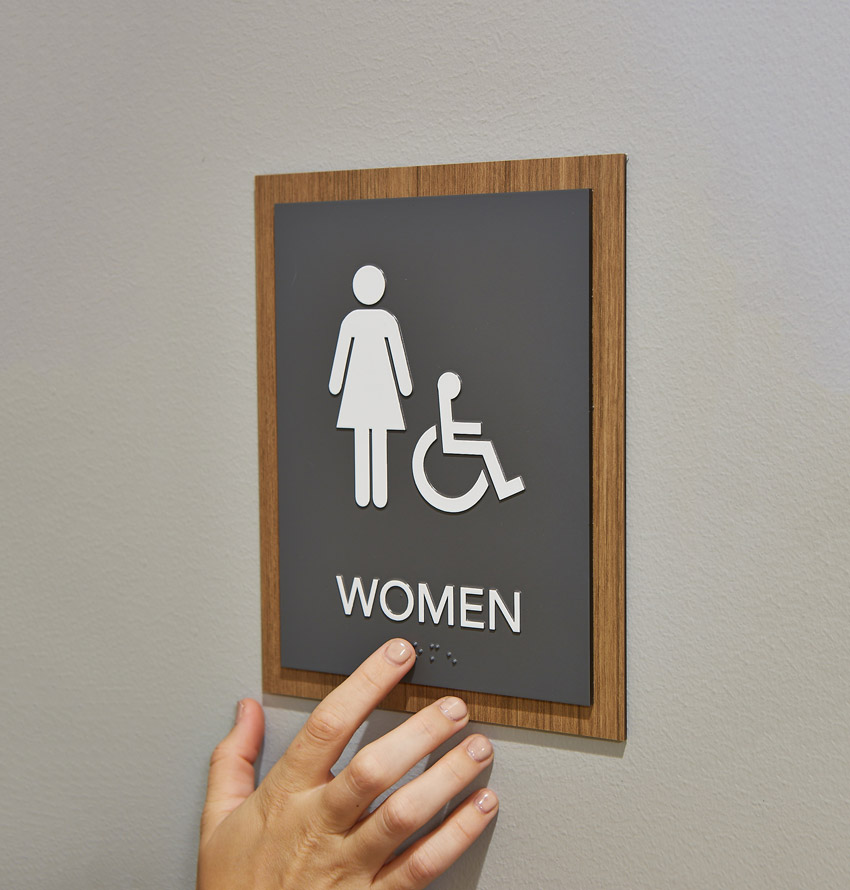Taking Accessibility to a New Level
MATERIALS
As with any public space, durability and longevity are key factors in product and material selection, but even more so with accessible design, as the fixtures must withstand more weight and pressure.
One popular option is high-density polyethylene (HDPE), which is a high-quality plastic. Impact and scratch resistant, the material performs well in humid environments, keeping mold and mildew away. One-hundred percent recyclable and naturally antimicrobial, it is easy to clean and maintain and comes in a variety of colors.
In a similar vein, solid-surface panels are a great alternative to tile, as they fully sidestep the issue of mold and mildew buildup in the grout, and the possibility of moisture getting behind the tiles and seeping into the gypsum board or other substrate. Furthermore, solid-surface shower installation can be finished in one-third the time of traditional tile. Thresholds, slopes, and non-slip textures can be cast from molds to provide consistency in profile and slope, ensuring functionality and code compliance.
“We make the case that solid surface as a material choice has tremendous benefit in design, installation, and day-to-day use,” explains Evan Bane, M.A., CDT, LEED Green Associate, marketing operations manager, Inpro Architectural Products, Muskego, Wisconsin.
Some manufacturers offer shower partition panels made from reinforced, synthetic, anti-absorbent polymer cores that are fully wrapped and sealed with solid surface. Consequently, this greatly reduces the panel weight while boosting the strength and rigidity of the partition panel.
CONCLUSION
In addition to the accessibility standards required by public facilities, increasing percentages of residences are opting for accessibility upgrades, in line with the aging-in-place trend.
As reported by the 2018 American Institute of Architects Home Design Trends Survey, 62 percent of homeowners want a doorless/no threshold shower, 61 percent are seeking a larger walk-in shower, and 55 percent are interested in greater adaptability/universal design features in their bathrooms.
The upshot is that accessible/universal design trends are poised to continue increasing. Consequently, it behooves owners, designs, specifiers, and contractors to stay up to date on the latest ADA requirements, trends, and bathrooms supporting these projects.
END NOTES
1Vespa, Jonathan. “The Graying of America: More Older Adults Than Kids by 2035.” United States Census Bureau. 13 March 2018. Web. 21 Aug. 2019.
2Arthritis Facts. Arthritis Foundation. Web. 21 Aug. 2019.
3Mobility Device Statistics: United States. Disability Statistics Center. The University of California. 22 April 2013. Web. 21 Aug. 2019.
4“Aging in Place: A State Survey of Livability Policies and Practices.” National Conference of State Legislatures and the AARP Public Policy Institute. December 2011. Web. 21 Aug. 2019.
5D’Vera, Cohn and Passel, Jeffrey S. “A record 64 million Americans live in multigenerational households.” Pew Research Center. 18 April 2018. Web. 21 Aug. 2019.
6Obesity and Overweight. Centers for Disease Control and Prevention Web. 21 Aug. 2019.
Notice


www.scrantonproducts.com











